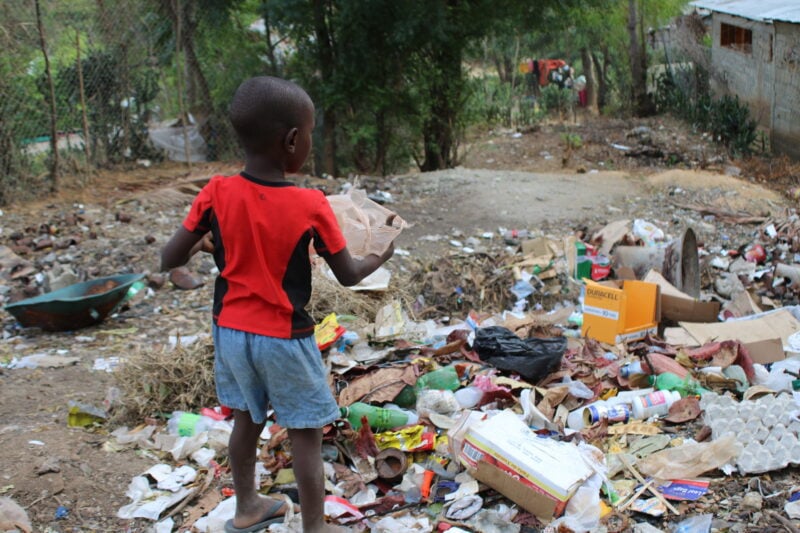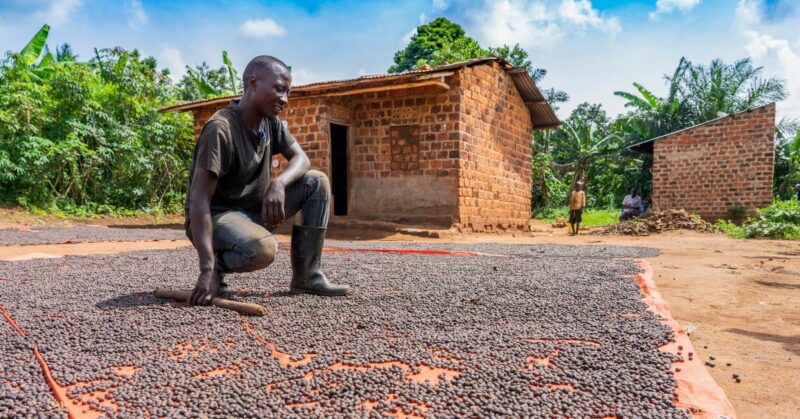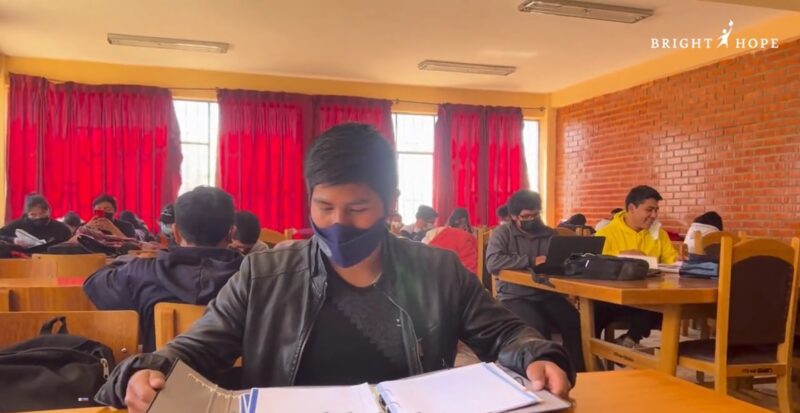Poverty is a complex issue with many different causes. Those causes vary depending on the country, region, or community in question. Let’s explore some of the main causes of poverty and why it persists in many parts of the world.
Lack of Access to Education
Education is a key pathway out of poverty. History shows education improves job opportunities and learning potential for even the poorest people. Many people living in poverty simply do not have access to quality education, which limits their ability to break the cycle of poverty.
To address these challenges, we can invest in providing educational opportunities that are accessible and affordable for all. This includes providing financial assistance for families who cannot afford education, improving school infrastructure and resources, investing in teacher training and development, and addressing discrimination and other barriers that limit access to education. By doing so, we can help ensure that education is one pathway out of poverty for students in developing nations.
Unemployment and Low Wages
Unemployment occurs when individuals are unable to find work despite actively seeking it. Low wages refer to wages that are insufficient to meet basic needs, such as food, shelter, and healthcare.
Inadequate employment opportunities can arise due to factors such as lack of economic growth, economic downturns, lack of investment, and automation. Low wages can be the result of weak labor protections, limited bargaining power for workers, and a lack of minimum wage policies.
The impact of unemployment and low wages can be severe. Without sufficient income, people struggle to meet basic needs, which results in food insecurity, homelessness, and limited access to healthcare. Low wages can also perpetuate the cycle of poverty, limiting the resources necessary to invest in their education or to build savings.
To address unemployment and low wages, governments and organizations can take several measures:
- Promote economic growth: Investing in infrastructure, education, and training programs can help to create jobs and improve employment opportunities.
- Implement labor protections: Governments can implement policies to protect workers, such as minimum wage laws, workplace safety regulations and anti-discrimination laws.
- Invest in education and training: By providing individuals with the skills and knowledge necessary to secure higher-paying jobs, education and training programs can help to break the cycle of poverty.
- Implement social safety nets: Social safety nets, such as unemployment insurance, cash transfer programs and food assistance programs, can help to support individuals and families in times of economic hardship.
Limited Access to Basic Needs
Lack of access to food, water, and healthcare also contributes to poverty. Food insecurity, for example, occurs when individuals do not have consistent access to sufficient food to meet their nutritional needs. This has negative impacts on health, including malnutrition, stunted growth, and cognitive impairment. Without proper nutrition, individuals also struggle to perform well in school or at work, limiting their opportunities to improve their economic situation.
Lack of access to clean water and sanitation facilities also leads to health problems, such as waterborne diseases and infections. These problems, in turn, result in increased healthcare costs, missed school or work days and decreased productivity, all of which exacerbate poverty.
To improve access to basic needs, governments and organizations can emphasize these priorities:
- Provide access to affordable and nutritious food: Governments can implement policies such as food assistance programs and nutrition education programs.
- Improve access to clean water and sanitation facilities: Governments can invest in infrastructure to provide access to these facilities, particularly in low-income communities.
- Invest in healthcare: Governments can invest in healthcare infrastructure and implement policies to improve access to healthcare services, such as health insurance programs and preventative care programs.
- Address systemic inequalities: Addressing discrimination and unequal distribution of resources can improve access to basic needs and reduce poverty.
Discrimination and Inequality
Discrimination and inequality can also contribute to poverty. Marginalized groups may face barriers to education, employment, and other opportunities. This limits their ability to break out of poverty and improve their economic situation.
For example, people in marginalized communities may face discrimination in hiring and promotion, limiting their access to higher-paying jobs and career advancement opportunities. They may also face discrimination in accessing education, which will limit their ability to gain the skills and knowledge necessary to secure higher-paying jobs.
In the same way, people in marginalized communities may also face discrimination in accessing financial services, loans, and credit, which may limit their ability to start businesses or invest in their education or training.
To reduce discrimination and inequality, governments and organizations can take these measures:
- Implement anti-discrimination policies and laws: These include affirmative action programs, anti-discrimination laws, and diversity-and-inclusion initiatives.
- Invest in education and training: Providing people in marginalized communities with access to education and training programs helps improve skills and knowledge and increases opportunities for higher-paying jobs and career advancement.
- Promote equal access to financial services: Governments and financial institutions can introduce programs to ensure equal access to financial services, including access to loans and credit, for people in marginalized communities.
Political Instability and Conflict
Political instability and conflict can have severe impacts on poverty, disrupting economic activity, causing job losses, and limiting access to basic needs such as food, water, and healthcare. Even worse, people living in conflict zones may be forced to flee their homes and thus become refugees, further exacerbating poverty.
Conflict often leads to a breakdown in infrastructure and disrupts the delivery of essential services. This may cause those impacted to lose their homes, jobs, and savings. Displacement increases social and economic disruption, with families being separated and communities being torn apart, leaving individuals vulnerable to exploitation and abuse.
To address political instability and conflict, governments can intervene in these ways:
- Invest in conflict prevention: Investing in conflict prevention measures can reduce the risk of political instability.
- Provide humanitarian aid: Providing food, water, and medical supplies may help to address the immediate needs of those affected by conflict.
- Invest in infrastructure: Investing in roads, bridges, and utilities, may help to create jobs and support economic activity, even in the midst of conflict.
- Support refugees and internally displaced persons: Providing support to those affected, including access to education and healthcare, can help to alleviate poverty and increase economic development.
Environmental Factors that Cause Poverty
Natural disasters, climate change, and resource depletion significantly contribute to poverty. Hurricanes, floods, and earthquakes bring widespread destruction to homes, infrastructure, and crops, leading to loss of lives and livelihoods. Climate change also leads to more frequent and severe droughts, floods, and heat waves, which can further disrupt economic activity and limit access to basic needs.
Resource depletion also contributes to poverty, limiting access to essential resources such as water and land. This may lead to increased regional conflict and displacement, as people are forced to compete for scarce resources. In addition, environmental degradation, such as deforestation and soil erosion, may limit agricultural productivity and reduce the availability of natural resources.
To address environmental factors that contribute to poverty, governments can invest in these efforts:
- Develop disaster preparedness and response programs: Such programs help to reduce the impact of natural disasters and mitigate their effects on poverty.
- Support sustainable development: Supporting programs such as renewable energy and sustainable agriculture initiatives may help to reduce the impact of climate change and resource depletion on poverty.
- Promote environmental conservation: Protecting forests and watersheds may help to preserve natural resources and promote economic development.
- Provide access to basic needs: Focusing efforts on providing food, water, and healthcare may help to alleviate the effects of environmental factors on poverty.
Final Thoughts on How to Address Poverty
Addressing poverty requires a comprehensive approach that takes into account the unique circumstances of each community or region. This may involve investments in education, healthcare, infrastructure, and social programs, as well as efforts to address discrimination, inequality, and environmental factors.
By addressing the underlying causes of poverty, we can help to create a more equitable society and ensure that individuals in developing nations have the resources necessary to lead healthy, fulfilling lives.
Donate to Bright Hope
Bright Hope International improves the quality of life for people in the poorest countries by addressing issues such as poverty, education, healthcare, and access to basic needs. We do this through a variety of programs, such as providing clean water, training local leaders, and empowering communities to develop sustainable solutions to poverty.




